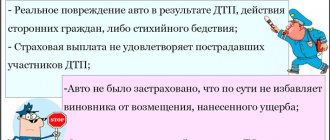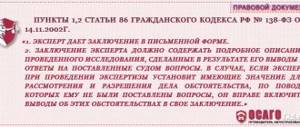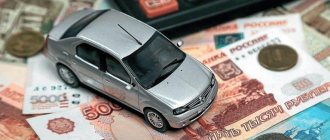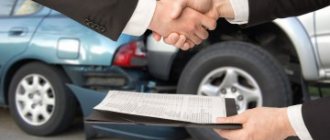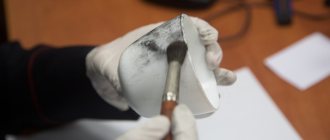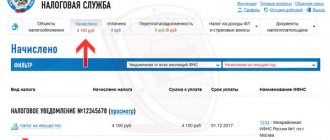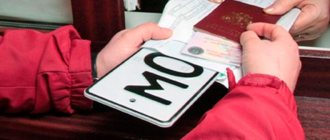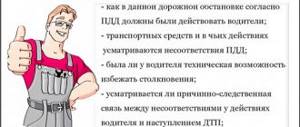Nothing can completely protect you from unusual situations on the road. Yes, a high level of driving, confidence on the road and compliance with the rules greatly reduce the risk of getting into an accident. However, none of the road users is completely insured against their likelihood. Almost every driver has encountered similar situations as a participant, or witnessed such events.
After each incident, an investigation is carried out to identify the culprit. It is he who will have to bear responsibility and compensate for the damage caused. But what to do if the person at fault for the accident does not want to compensate for the damage caused? Or what should a driver do if the culprit was not identified on the spot or you were unfairly assigned to him? It is in such situations that they resort to the help of automotive technical expertise. The auto technical examination itself allows us to determine the cost of damage. We will talk about this and more in our article.
Why is it needed?
The purpose of an automotive technical examination is always determined by the need to obtain a specialist’s professional judgment on certain questions, which are impossible to answer without special training, education or instrumental research.
The help of a “professional witness,” as an expert is sometimes called, is resorted to by investigative bodies and courts when they consider it necessary to confirm the circumstances of the case with an expert opinion or when it is impossible to establish any fact without it.
Participants in the incident submit questions for auto technical examination to confirm their arguments about the circumstances of the case or substantiate objections to the arguments of the other party.
In some cases, to resolve specific issues, a special analysis is required. Thus, in accordance with Article 12.1 of the Federal Law No. 40-FZ dated April 25, 2002, an independent technical examination must be carried out to establish:
- circumstances of damage to the car;
- its damage;
- causes of breakdowns;
- technology, methods and cost of car restoration.
In what situations can a driver not do without automotive technical expertise?
There was an accident. Both drivers adequately assessed their actions, decided on the culprit and agreed on the amount of compensation. In this case, there is no need either to call a traffic police officer or to conduct an independent examination.
But this doesn't always happen. Situations when each driver does not admit his guilt in an accident and considers himself a victim are the most common. Car owners argue, cannot agree, and eventually call a traffic inspector. He determines the culprit of the accident. If you do not agree with the decision of the traffic police officer, initiate an auto technical examination.
Experts determine the magnitude and nature of the damage, the influence of environmental factors on the accident, the degree of culpability of the drivers, the estimated cost of the car and its repair, and other features of the incident. Here are the cases in which automotive technical expertise will be needed:
- if drivers cannot determine the culprit of the accident;
- if the incident was the result of a car breakdown;
- if the car received damage due to third-party events, force majeure or the fault of third parties;
- if car owners argue over the cost of compensation, underestimate payments, and do not agree with the expenses of the victim;
- if the matter has reached court proceedings and either party wants to challenge the court’s decision;
- if the car owner has a disagreement with the insurance company, the insurers refuse to pay compensation, underestimate it, and ignore the terms of the car insurance contract;
- if the car damaged in the accident is pledged (purchased on credit).
Automotive technical expertise is always independent - it is carried out by an expert organization or a private expert. Be sure to check all licenses and permits for the contractor’s appraisal activities. If you are conducting an auto product inspection, ask the appraiser for a certificate of membership in a self-regulatory organization - SRO.
In addition to auto merchandising, there is an examination of the condition of the car, accidents and the road surface (you can analyze everything in a complex or each factor separately). Experts also conduct a transport and traceological assessment (identify all the circumstances of the accident) and an engineering and psychological assessment of the participants in the accident. The examination can be primary (inspection of damaged objects), additional (studying issues that arose during the analysis) and repeated (rechecking information).
An independent assessment is needed not only to identify the circumstances of the accident, but also to calculate the actual cost of material damage and determine compensation for the insurance company. As a result of an automotive technical examination, the appraiser issues an independent opinion, which is a legally significant document. It is used by lawyers, judges and insurers.
Kinds
According to their procedural status, examinations are divided into:
- judicial;
- extrajudicial.
The first are carried out within the framework of civil, administrative or criminal proceedings, based on a determination of the court, official or body considering the case. Both sides of the dispute can participate in the research without interfering in its progress and pose questions to the expert. The expert is warned of liability for giving a knowingly false conclusion.
An extrajudicial investigation is carried out on the basis of an application from an interested person. Questions for an extra-judicial automotive technical examination are prepared and put to the expert by the applicant. The expert does not provide a receipt of responsibility.
On a note. The law does not give any special preference to forensic examination over extrajudicial examination.
How is an auto technical examination carried out?
Inspections must be carried out within the period established by law:
- from two weeks to a month is the standard “corridor” for conducting all tests;
- from three to five days - urgent examination for money.
There is no general algorithm for conducting tests, however, to reveal all the circumstances of the case, experts must check:
- reports and photographs from the scene;
- malfunctions in cars involved in road accidents;
- driver testimony, driver condition at the time of the accident;
- protocol and testimony of witnesses and traffic police officers;
- what damage was caused to vehicles;
- condition of the road and road structures at the accident site;
- other circumstances that could in any way cause the incident.
Based on the results of the inspection, an inspection report is issued, sometimes there may be several of them. The conclusion of the expert conducting the automotive technical examination is sent to the judicial authorities or investigative authorities. It becomes almost the main aid in the case of an offense - it is on its basis that investigators or the court will determine the culprit according to the law.
You can also find out how an independent examination of a car is carried out after an accident.
What is the purpose of automotive technical expertise?
This examination in case of an accident can be carried out for the purpose of:
- establishing the specific circumstances of the accident;
- checking the serviceability of vehicles at the time of the accident;
- examination of traces on vehicles and the scene of the incident;
- determining the cost of restoration repairs and vehicle assessments;
- establishing factors associated with a traffic accident: condition of the roadway, road conditions.
Within the framework of compulsory motor liability insurance, in order to establish the insured event and the amount of losses caused to the policyholder, an independent technical examination is carried out.
The main issues of examination of the technical condition of transport:
- What is the technical condition of the vehicle (brake system, steering, chassis, etc.).
- What are the technical reasons for the malfunction of the system, unit (destruction of the part)?
- At what point did the malfunction (destruction of the part) occur relative to the moment of the accident?
To resolve these issues, a vehicle or its destroyed components (parts) are placed at the disposal of experts.
Questions about the reasons for the destruction of parts are resolved within the framework of a comprehensive automotive and metallurgical examination.
Questions for an expert when conducting an auto technical examination
A specialist’s opinion may be useless if the questions for a vehicle technical examination in case of an accident are formulated incorrectly.
The expert conducting the investigation may express his opinion about the actual circumstances of the accident or its real consequences, but he never gives a legal assessment of the actions or inactions of the participants. Therefore, questions of law are never put before an expert.
For example, asking an expert: “Who is to blame for a traffic accident?” - useless. This is a subject of legal assessment; the court must establish guilt. The answer to the question: “What technical condition was the vehicle in at the time of the collision?”, on the contrary, will help confirm the argument about the malfunction of the opponent’s car as the cause of the accident.
When preparing a task for a specialist, you should rely on the circumstances of the incident. Ask yourself: what facts established by the expert opinion will help substantiate your arguments.
On a note. Expertise is not an end in itself, but a means of proof. It must be used wisely and carefully.
What's happened
Automotive technical examination is an assessment of the general technical condition of the car, as well as establishing the cost of damage that was caused to the vehicle. Among other things, the expert gives an assessment of how exactly certain injuries could have been caused. Automotive technical examination can be carried out in relation not only to passenger cars , but also to motorcycles, public transport and even agricultural machinery.
However, the object of automotive technical expertise is not always only the vehicle. In order to have a complete picture of the incident, it may be necessary to inspect the accident scene itself , as well as study all available videos, photographs and other materials from the scene. In fact, it is difficult to classify only one operation as an automotive technical examination, because it can include many procedures to establish the necessary facts.
There are several types of automotive technical expertise, each of which helps to identify specific details of the incident. So, for example, the examination could be:
- To clarify the circumstances of the accident. It is used to restore the mechanism of the accident itself, where the vehicles of the participants were, what the speed was during the collision, whether traffic rules were observed. It may also include such seemingly trifles as the time required to stop the car. That is, the picture is restored in as much detail as possible ;
- Assessment of the technical condition of the vehicle. Determines the malfunction of the vehicle, what could have caused it, whether the breakdown occurred before or after the accident, and whether it could have caused the accident. That is, if you had a certain malfunction that you simply could not identify before the accident, and it was this that became the cause of the accident, the examination will reveal this ;
- Transport-trasological. Such an examination is used to determine the specific location of an accident, as well as its features, and restores the trajectory of vehicles along the road surface, whether the car was stationary or not. It also helps in identifying specific damage as a result of this particular accident. ;
- Engineering and psychophysical. First of all, this examination concerns the drivers themselves, because it is established whether they could have time to react, how they assessed the situation and when exactly each of the participants reacted to what was happening .
Carrying out an auto technical examination will help not only to restore all the factors of the accident, but also to prove the specific guilt of each of the participants or its absence.
Expert institutions
The research can be entrusted to government expert organizations or commercial ones. The law does not establish any special conditions for conducting activities for this type of business (licensing, membership in a self-regulatory organization). Therefore, even the court can order a non-state institution to answer questions.
Specific requirements for expert qualifications are established only for specialists working in state expert institutions, as well as experts giving opinions in order to implement the provisions of the Law on Compulsory Motor Liability Insurance.
Courts, when deciding which organization to send questions for auto technical expertise on road accidents, more often resort to the services of commercial organizations, since government agencies are usually very busy and they have to wait quite a long time for a conclusion.
The cost of services is approximately the same, and varies from 2,500 rubles for a simple study to several tens of thousands for a complex one. The size depends, first of all, on the complexity and scope of the audit.
Carrying out an examination
The examination procedure takes place in several stages:
- the participating parties notify about the fact of the future examination, the time and place of its conduct;
- an inspection of the accident site and the vehicle damaged in the accident is carried out for the purpose of further examination;
- the collected information is analyzed, specialists prepare the result of the examination;
- an authorized expert draws up a report on the accident, which is provided to the applicant.
Questions for experts
In order for the auto technical examination of a vehicle after any accident to achieve its goal and become as accurate and correct as possible, the application must indicate the correct list of questions to the specialist. The following is a list of questions for the expert recommended for auto technical examination of road accidents.
To check the circumstances:
- what was the actual speed of the vehicle before the driver started braking;
- length of braking and stopping distances;
- whether the driver of the vehicle had any technical ability to avoid an accident through the use of emergency braking techniques;
- what norms, requirements and clauses of the Traffic Rules should have been followed by each participating vehicle driver in the current situation;
- whether the driver acted in accordance with the traffic rules;
- what is the permissible speed of movement of a vehicle on a section of the highway with a similar turning radius or visible distance;
- the minimum acceptable distance in a particular situation for the vehicle in relation to the vehicle in front;
- whether, from a technical point of view, the driver’s explanations corresponded to the real state of affairs;
- what was the distance when the driver could objectively see a pedestrian emerging from behind a stationary obstacle;
- which of the participants in the accident had the right of way;
- what is the distance at which the vehicle driver should have started the maneuver for safe overtaking or detour.
For technical expertise:
- whether the vehicle had any malfunctions;
- what are the causes of existing vehicle malfunctions;
- whether the defect was the cause of the accident;
- could the vehicle breakdown occur as a result of repair or maintenance;
- what was the impact of the malfunction or defect on the stability of the vehicle, its controllability;
- was the driver of the vehicle, taking into account the detected breakdown, able to prevent the accident;
- whether the driver/other person responsible for releasing the vehicle onto the route/flight was able to identify the breakdown before the accident;
- whether the vehicle repairs performed were of high quality;
- if the vehicle was repaired, was the breakdown eventually eliminated;
- whether the work listed in the work order has been completely completed.
For traceological examination:
- where is the location of the collision/collision/impact;
- how the vehicles are located at the time of the accident relative to each other and the roadway, road surface and its boundaries;
- what was the mechanism of the accident;
- what is the trajectory of movement of cars during an accident before and after the impact;
- which of the documented damages to the affected vehicles could have been caused during the accident;
- what specific parts of the vehicle were in contact at the beginning of the accident;
- whether the car was stationary during the accident at the time of impact;
- which of the participants in the accident was moving and which was standing still.
To check the road conditions of a section of the highway:
- compliance of road signs installed at the accident site with GOST and traffic regulations;
- the condition of the road surface and its compliance with GOST at the site of the accident;
- the presence of markings on the area in question, and its compliance with GOST;
- whether (if applicable) the traffic light mode in the accident zone complied with GOST regulations;
- Is traffic organized safely on this section of the route, and are there any flaws or shortcomings in its organization?
For auto goods:
- what damage and defects are there on the vehicle;
- volumes of upcoming repair work;
- the cost of restoring a vehicle after an accident;
- what will be the market value of the damaged vehicle.
Dates
From the moment the application is accepted, the procedure must be carried out:
- in the usual manner: the examination is carried out in 15 - 30 days;
- in urgent and important cases, for an additional fee, the time frame for conducting a vehicle technical examination after an accident can be reduced to 3-5 days.
Issue cost
The price of any examination in each case is calculated individually on a contractual basis. On average, in 2021 you should focus on an amount of 15 thousand rubles.
Cost of the procedure
When submitting an application for an automotive technical examination, please note that the cost of the procedure will depend on the type of research that you insist on. The price is also affected by the number of questions that experts need to answer. The minimum cost for the services of an expert technician is 5-8 thousand rubles. If it is necessary to conduct additional tests or a more in-depth study, the cost can reach 50 thousand rubles.
Payment for auto technical examination after an accident is carried out at the expense of the person who initiates its implementation.
Usually this is an investigator, judge, prosecutor or plaintiff. In the first three cases, all expenses are covered by the state. The plaintiff has the right to recover the cost of the procedure from the defendant through the court. But these requirements will be satisfied only if the decision is made in favor of the plaintiff.

